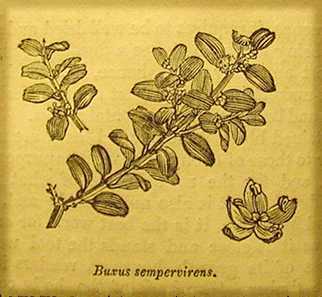
Properties of Timber: Box
When allowed to grow to its full height, the box reaches from twelve to fifteen feet. The trunk varies in diameter from three to six inches. It is a native of the middle and southern parts of Europe. In early times it flourished upon many of the barren hills of England. It gave its name to Boxhill, in Surrey, but now the trees have gone.
The timber is unique and combines qualities which are not found existing together in any other. It is as close and heavy as ebony, not much softer than lignumvitae. It cuts better than any other wood. When an edge is made of the ends of the fibres, it stands better than lead or tin; nearly as well as brass.
Like holly, box is very retentive of its sap, andwarps when not properly dried. When sufficiently seasoned it stands well.
For the wooden part of the finer tools, for everything that requires strength, beauty, and polish in timber, there is nothing equal to it.
There is one property for which box alone is properly adapted, and that is the formation of wood-cuts, for illustrations in books. These reduce the rpice considerably in the first engraving, and also in the printing. While thewood-cut in box gives as high and sharp a finish as any metal, it takes the ink much better. It is also durable; if the cut is not exposed to alternate moisture or heat, so as to warp or cruch it, it will print many thousands of copies.
England is the country where this economical means of illustration is performed in the greatest perfection; and just when a constant demand for box had been created in this way, the trees available for the purpose had vanished from the island.
Permanent figures and ornaments are often impressed upon box. The wood is softened with heat and moisture, and then the die is pressed on it. The image is retained on the wood with considerable sharpness. Snuff-boxes of this description are made in France, Switzerland and Germany. The material used is mainly the root of the box tree.
wood-cut:

summarised from "The Library of Entertaining Knowledge - Timber trees" (1829), pub. Charles Knight, Pall Mall.
ND, habitat21
big turbines
small turbines